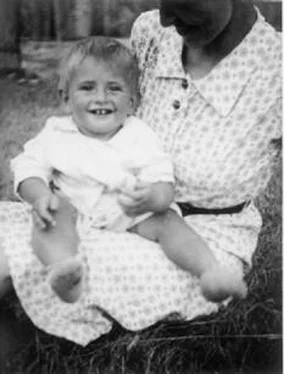The master was much too strong. In about fifteen minutes, puffing on his pipe, Pavey captured Bobby’s queen, thereby ending the game. He graciously offered his hand to the boy and with a gentle smile said, “Good game.” Bobby stared at the board for a moment. “He crushed me,” he said to no one in particular. Then he burst into tears.
Despite his phenomenal memory, Bobby as an adult could never remember the moves of that game with Pavey. A friend’s offhand mention that Bobby probably had every expectation of winning his first game against a chess master elicited a strident rebuke: “Of course not!” He did say that Pavey probably had “gone easy” on him and that he was amazed that he’d even lasted a quarter of an hour against him. That he was passionate enough to cry demonstrated his growing intensity concerning the game. Even at seven he didn’t consider himself an amateur. He later admitted that the game had a great effect in motivating him.
One spectator at the exhibition that evening was Carmine Nigro, a short, bald man in his early forties; Bobby described him as “cheery.”
Nigro studied the Pavey-Fischer game intently. He liked the moves that Bobby was making. They weren’t scintillating, but they were sensible ones, especially for a beginner. With the utmost concentration, Bobby seemed to block out everything and everyone around him. When the game concluded, Nigro approached Regina and Bobby and introduced himself as the newly elected president of the Brooklyn Chess Club. He invited Bobby to come to the club on any Tuesday or Friday night. No, there would be no membership dues for the boy, Nigro assured Regina. She took him to the club, which was located in the old Brooklyn Academy of Music, the very next evening.
2
Childhood Obsession

WHEN SEVEN-YEAR-OLD BOBBY, accompanied by his mother, walked into the Brooklyn Chess Club for the first time on a Friday night in January 1951, he was an anomaly. He was, in fact, the first child permitted to enter. Even the appearance of Regina Fischer was unusual: There were no other women present, and at that time there were no female members on the club’s roster, as was the case at many other clubs in the United States.
As the new president of the club, Carmine Nigro announced that Bobby was his guest and would be accepted as a member. No one had the temerity to disagree. It was a tradition in many chess clubs, not only in the United States but throughout the world, that children were not to be heard, and certainly not seen. Even Emanuel Lasker, who ultimately became World Chess Champion, was as a child denied membership in his local club in Germany, despite his evident talent.
The Brooklyn Chess Club, established just after the Civil War, was one of the most prestigious in the nation. It was housed in the impressive and stately Brooklyn Academy of Music, where Enrico Caruso and Geraldine Farrar had sung. The club had distinguished itself by competing every year in the Metropolitan Chess League, often defeating dozens of clubs throughout the New York area. Nevertheless, Bobby seemed unafraid of the cigar-smoking adepts hunched over their boards.
The room was quiet except for the occasional rap of a chess piece slammed to the board in anger. At the conclusion of a game, a player might ask, “If I’d played the rook instead of the bishop, what would you have done?” or mutter indignantly, “I overlooked a mating net: You’re lucky to get a draw.” Invariably, the tones were hushed, even when the speaker was annoyed. Bobby looked on in wonderment, understanding some of the jargon and trying to comprehend the rest.
The problem that developed for Bobby almost instantly that night was more in the minds of his potential opponents. None of the club’s veterans wanted to play a boy, especially since Bobby looked to be about five. A chorus of nervous, fretful snickers ran through the high-ceilinged room when it was suggested they “give Bobby a chance.” The predominant feeling was: It’s bad enough to lose to a peer, but what if I lose to a seven-year-old? The embarrassment! The loss of reputation! After coaxing from Nigro, a few of the older players relented and gave Bobby a game or two.
Most were experienced tournament competitors, some even approaching the strength of Max Pavey. As it developed, they had nothing to fear though: Bobby lost every game that night.
Despite his defeats, Bobby kept coming back for more. He became a dedicated member, and a bit of a novelty. The tableau of a little boy engaged in mental combat with a judge, doctor, or college professor some eight or ten times his age was often greeted with mirth and wonder. “At first I used to lose all the time, and I felt bad about it,” Bobby said later. He was teased unmercifully by the conquering players. “Fish!” they’d bleat, using the chess player’s derisive term for a really weak player, whenever Bobby made an obvious blunder. The epithet hurt even more because of its similarity to his own name. Bobby himself despised the term. Later he’d refer to a poor player as a “weakie”—or, less commonly, a “duffer” or “rabbit.”
Nigro, an expert player of near master strength, sensed potential in the boy, and aware that Bobby was without a father, he assumed a mentoring position. He became the boy’s teacher and invited him on Saturdays to his home, where he’d match him up with his son Tommy, just a shade younger than Bobby though a slightly better player. Tommy didn’t mind playing chess with Bobby, but he didn’t want to take lessons from his father. On those teaching days, Nigro would greatly increase his son’s allowance if he’d sit still long enough to learn chess tactics.
As soon as Bobby began to understand the basics of chess, Nigro went over specific ways to conduct the part of the game known as the opening, where the first few moves can decide or at least influence the outcome of the contest. These initial moves and “lines” follow well-charted paths that have been chronicled for centuries, and players who want to improve their game attempt to understand and memorize them. Because there are a myriad of such variations, it’s difficult for most players to internalize even a small portion. For example, there are 400 different possible positions after two players make one move each, and there are 72,084 positions after two moves each—not all good, it must be added. But Bobby approached with dedication the daunting task of learning many of the substantive ones. Referring to the difficult regimen, he later said, “Mr. Nigro was possibly not the best player in the world but he was a very good teacher. Meeting him was probably a decisive factor in my going ahead in chess.”
Nigro had no problem teaching Bobby. The boy could hardly wait for his weekly lesson, and eventually he began to defeat Tommy. “I started going to Mr. Nigro’s house on Saturdays,” Bobby later wrote, “as well as meeting him on Fridays at the Club. My mother was often on duty on weekends at her job as a nurse, and was glad to have me go [to Mr. Nigro’s house].”
In 1952, still not yet turned nine, Bobby made his first entrance into competitive chess. A group of Nigro’s protégés won the first match with a score of 5–3; the score of the second match has been lost or forgotten. Auspiciously, Bobby won his first game and drew his second against ten-year-old Raymond Sussman, the son of a dentist, Dr. Harold Sussman, a nationally rated master from Brooklyn. Dr. Sussman was also an amateur photographer, and he captured some portraits of Bobby that worked their way into the Fischer oeuvre years later. Fittingly, Sussman also became Bobby’s dentist. “He had a great set of teeth,” Sussman remembered.
Читать дальше



![Антон Текшин - EndGame [СИ]](/books/394477/anton-tekshin-endgame-si-thumb.webp)









